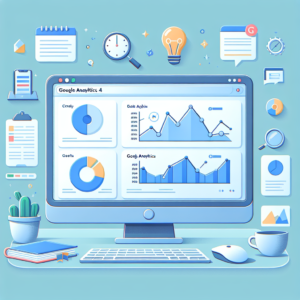“`html
Reduce Bounce Rate for Higher Conversions
At Zenscape, we understand that reducing your website’s bounce rate is essential to increasing your conversions. A high bounce rate indicates that visitors are leaving your site without engaging further, costing you potential leads and revenue. In this guide, we’ll share proven strategies to help lower your bounce rate and boost your conversions.
Understanding Bounce Rate
Bounce rate is the percentage of visitors who navigate away from your website after viewing only one page. A high bounce rate can signal various issues such as poor user experience, irrelevant content, or slow loading times. Reducing your bounce rate is crucial for keeping visitors engaged and driving them towards conversion actions.
Strategies to Reduce Bounce Rate
Here are 13 actionable strategies to decrease your website’s bounce rate and increase conversions:
1. Improve Page Load Times
Website speed is a critical factor in user experience. If your pages take too long to load, visitors are likely to abandon them. Use tools like Google PageSpeed Insights and GTmetrix to analyze your site’s performance and identify areas for improvement.
Tips for faster load times:
- Compress images without compromising quality.
- Minimize HTTP requests by reducing assets like scripts and stylesheets.
- Utilize browser caching and a Content Delivery Network (CDN).
2. Optimize for Mobile
Mobile optimization is no longer optional. With the majority of users accessing websites via mobile devices, your site must be responsive and mobile-friendly.
Mobile optimization tips:
- Use a responsive design that adjusts to different screen sizes.
- Ensure touch elements are easily clickable.
- Optimize images and fonts for mobile performance.
3. Create Engaging Content
Content is king, and captivating content can keep visitors on your site longer. Focus on providing value, answering questions, and solving problems your audience faces.
Best practices for engaging content:
- Craft compelling headlines that grab attention.
- Use subheadings, bullet points, and brief paragraphs for readability.
- Incorporate multimedia like images, videos, and infographics
4. Leverage Internal Linking
Internal links guide users through your site and encourage them to explore more pages. Ensure your content includes relevant internal links to keep visitors engaged.
Internal linking tips:
- Link to related articles and resources on your site.
- Use descriptive anchor text for context.
- Maintain a logical site structure for easy navigation.
5. Enhance User Experience
A positive user experience is paramount. Ensure your website is easy to navigate, visually appealing, and free of intrusive elements like excessive pop-ups.
Focus on these user experience elements:
- Clear and intuitive navigation menus.
- Consistent color schemes and fonts.
- Eliminate distracting ads and pop-ups.
6. Use Clear Call-to-Actions (CTAs)
Well-placed and clear CTAs guide your visitors towards desired actions like signing up, purchasing, or contacting you. Ensure your CTAs stand out and are easy to find.
Effective CTA strategies include:
- Using contrasting colors to make CTAs stand out.
- Placing CTAs above the fold.
- Using action-oriented language.
7. Maintain Content Relevance
Ensure your landing pages align with your users’ search intents. If users don’t find what they’re looking for immediately, they’re likely to bounce.
Maintain content relevance by:
- Conducting keyword research to align content with search intent.
- Regularly updating content to keep it current.
- Ensuring titles and meta descriptions accurately reflect page content.
8. Utilize Exit-Intent Pop-ups
Exit-intent pop-ups can capture a visitor’s attention right before they leave. Offer incentives like discounts, free resources, or newsletter sign-ups to retain them on your site.
Best practices for exit-intent pop-ups:
- Ensure the pop-up design is compelling and not intrusive.
- Offer clear value and avoid generic messages.
- Test different pop-up triggers and offers to see what works best.
9. Employ A/B Testing
Continuous testing allows you to optimize your pages for better performance. A/B testing helps identify what changes resonate best with your audience.
Consider A/B testing:
- CTAs placement and design.
- Headline variations.
- Different landing page layouts.
10. Make Your Website Search-Friendly
Implementing an efficient search function helps users find information quickly. A search bar should be easily accessible and deliver relevant results.
Search optimization tips:
- Place the search bar prominently on your homepage.
- Optimize search algorithms for relevant results.
- Ensure search suggestions reflect user intent.
11. Use Analytics to Understand Visitor Behavior
Tools like Google Analytics provide insights into user behavior on your site. Understanding where visitors drop off can help you pinpoint issues and areas for improvement.
Track:
- High exit pages.
- User flow and navigation paths.
- Engagement metrics like average session duration.
12. Engage Users with Interactive Elements
Interactive elements can keep users engaged and encourage further exploration. Consider incorporating quizzes, calculators, or interactive infographics.
Ideas for interactive content:
- Polls and surveys to gather user feedback.
- Interactive maps or visualizations.
- Gamified elements like progress bars.
13. Address Technical Issues Promptly
Technical glitches can frustrate users and lead to high bounce rates. Regularly audit your site for broken links, 404 errors, and other technical problems.
Steps to maintain technical health:
- Conduct regular site audits using tools like Screaming Frog or SEMrush.
- Fix broken links and resolve 404 errors promptly.
- Ensure server uptime and reliability.
Conclusion
Reducing bounce rates is about creating a positive, engaging, and efficient experience for your visitors. By implementing these strategies, you can keep your audience engaged, encourage further interaction, and ultimately increase your conversions.
Ready to take your website performance to the next level? Contact us today to schedule a free consultation with one of Zenscape’s digital marketing specialists. Let us help you achieve your business growth goals with our holistic digital marketing solutions.
“`



